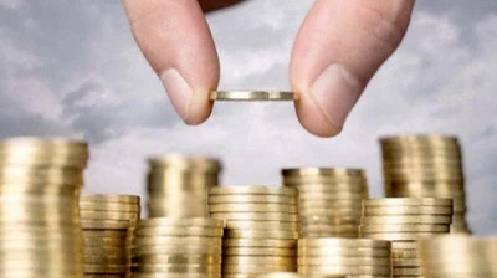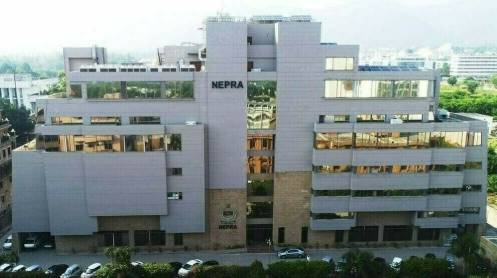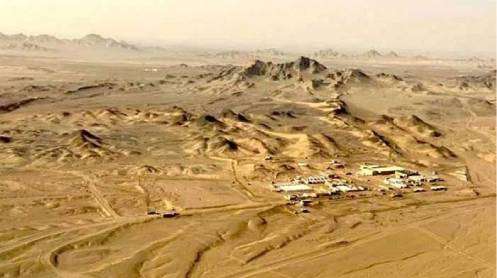ISLAMABAD: Under a constantly rising debt burden, the Pakistani economy has been rapidly borrowing. In the span of just one year, the PMLN-led coalition government has piled up over a third or Rs14.881 trillion debt on the nation, ballooning it to a staggering Rs59.247 trillion by the end-March 2023. This trend of escalating debt accumulation is consistent with each successive government, surpassing the debt levels of its predecessors. Notably, Pakistan’s public debt has been on a steep rise annually, primarily driven by substantial fiscal deficits. Since 2008, when the country’s total debt stood at Rs6.127 trillion, it has grown more than ten-fold. The magnitude of Pakistan’s daunting debt burden becomes apparent as it is estimated that every Pakistani, including infants, men, and women, carries a debt of Rs258,472. This striking figure was unveiled during the launch of the Pakistan Economic Survey 2022/23 on Thursday.
The survey, based on the latest data, indicates that Pakistan’s total population stands at 229.22 million. Breaking down the country’s total public debt of Rs59.247 trillion, it is revealed that domestic debt amounts to Rs35.07 trillion, while external debt stands at Rs24.17 trillion (equivalent to $85.18 billion). The substantial increase in Pakistan’s total debt burden can be largely attributed to the rapid devaluation of Pakistani rupee against a basket of international currencies, particularly the US dollar. This devaluation significantly inflated the nation’s overall debt load. When the Pakistan Tehreek-e-Insaf (PTI) government was removed from power in early April 2022, the public debt stood at Rs44.366 trillion as of end-March 2022. During its 44-month tenure, starting from August 2018, the PTI government accumulated an additional Rs19.413 trillion in public debt, resulting in a total of Rs44.366 trillion by the end of March 2021. Interestingly, the ratio of public debt to the country’s GDP decreased from 73.9 percent at the end of June 2022 to 70 percent of the total economy by the end of March 2023. In 2018, when the total debt amounted to Rs39.19 trillion, this ratio was 63.67 percent of GDP.
However, it rose to 74.68 percent in FY19, 76.56 percent in FY20, and then decreased to 71.4 percent in FY21. By the conclusion of the fiscal year 2017/18, the total public debt, including domestic and external debt, reached Rs24.95 trillion. “Apart from financing the fiscal deficit, the significant depreciation of the Pakistani rupee against the US dollar, approximately 39 percent, resulted in a substantial increase in the stock of external public debt when converted into Pakistani rupees,” the survey said. During the first nine months of the current fiscal year (July-March 2023), Pakistan’s public debt surged by a worrisome Rs10 trillion, compared to Rs4.52 trillion in the same period of FY22.
This substantial increase was primarily driven by factors such as rupee devaluation and mounting interest on debt. Within these nine months, rupee devaluation contributed Rs7.17 trillion to the debt, a significant rise from Rs1.76 trillion in the previous year. Furthermore, interest payments on debt amounted to Rs3.58 trillion, compared to Rs2.12 trillion in the corresponding period of the previous year. During its nearly four-year tenure, the previous government witnessed a rise in domestic debt by Rs11.66 trillion, reaching a total of Rs28.076 trillion. External debt also increased by Rs7.753 trillion, amounting to Rs16.29 trillion or $88.8 billion at present. In dollar terms, external public debt escalated by $18.528 billion over the course of the nearly four-year period.
Notably, when President Pervaiz Musharraf relinquished power, the total public debt stood at Rs6.127 trillion. In contrast, at the beginning of his term in 1999, the debt was a mere Rs2.94 trillion, reflecting a significant increase of 108 percent (equivalent to Rs3.187 trillion) during his nine-year tenure. The Pakistan Peoples Party (PPP)-led government, during its five-year tenure until 2013, further inflated the public debt by Rs8.16 trillion (a surge of 133.2 percent) to reach Rs14.29 trillion.
Subsequently, Nawaz Sharif’s government accumulated an additional Rs10.66 trillion in debt over a five-year period, raising the nation’s debt burden to Rs24.95 trillion. Following that, Imran Khan’s government added Rs19.4 trillion to the debt during its less than four-year tenure. The incumbent government has now piled on an additional Rs14.881 trillion in just one year. Gross external loan disbursements were recorded at $7.032 billion (excluding disbursement from Pakistan Banao Certificates, NPCs and non-resident investment in government securities) during the first nine months of FY23. Disbursements from multilateral sources amounted to $5.137 billion and accounted for 73 percent of the total disbursements.
The main contributors were the Asian Development Bank (ADB) with $1.939 billion, World Bank $1.218 billion, and IMF $1.166 billion. Besides, bilateral sources contributed $995 million or 14 percent in total disbursements. Out of this, the Saudi Oil Facility constituted around $883 million; commercial loans contributed $900 million in total disbursements (US$700 million represents the refinancing of FY23 maturity and US$200 million represents the refinancing of the FY22 maturity), mainly representing refinancing of commercial loans. On public debt servicing, (paying interest and principal amount), the government spent Rs3.58 trillion during the first nine months of the current fiscal year. Interest expense on domestic debt was recorded at Rs3.107 trillion, which is 64 percent higher as compared to interest expense on domestic debt in the same period of the preceding year.
The interest expense on external debt was Rs475 billion, which is 115 percent higher as compared to interest expense on external debt in the same period of last year. The reasons for this rise mainly include a rise in global interest rates and devaluation of the rupee against the US Dollar. External public debt repayments were recorded at $11.4 billion during the first nine months of FY as compared with US$8.139 billion during the same period last year. This increase in repayments is primarily due to the resumption of debt repayment to bilateral creditors, which were deferred under the Debt Service Suspension Initiative (DSSI), US$1.0 billion International Sukuk maturity in Dec 2022, and higher repayment of commercial loans i.e., bank loans and other short-term credits.
Interest payments were recorded at US$2.119 billion during the first nine months of FY23 as compared to $1.297 billion during the same period of the preceding year. The main factors, which increased the external interest servicing during the ongoing fiscal year, were the resumption of interest payments to bilateral creditors in the third quarter of FY23, which were deferred under DSSI, increase in global interest rates, leading to the resetting of floating rate external debt at a higher rate, and higher interest servicing against commercial loan portfolio and Eurobonds.





